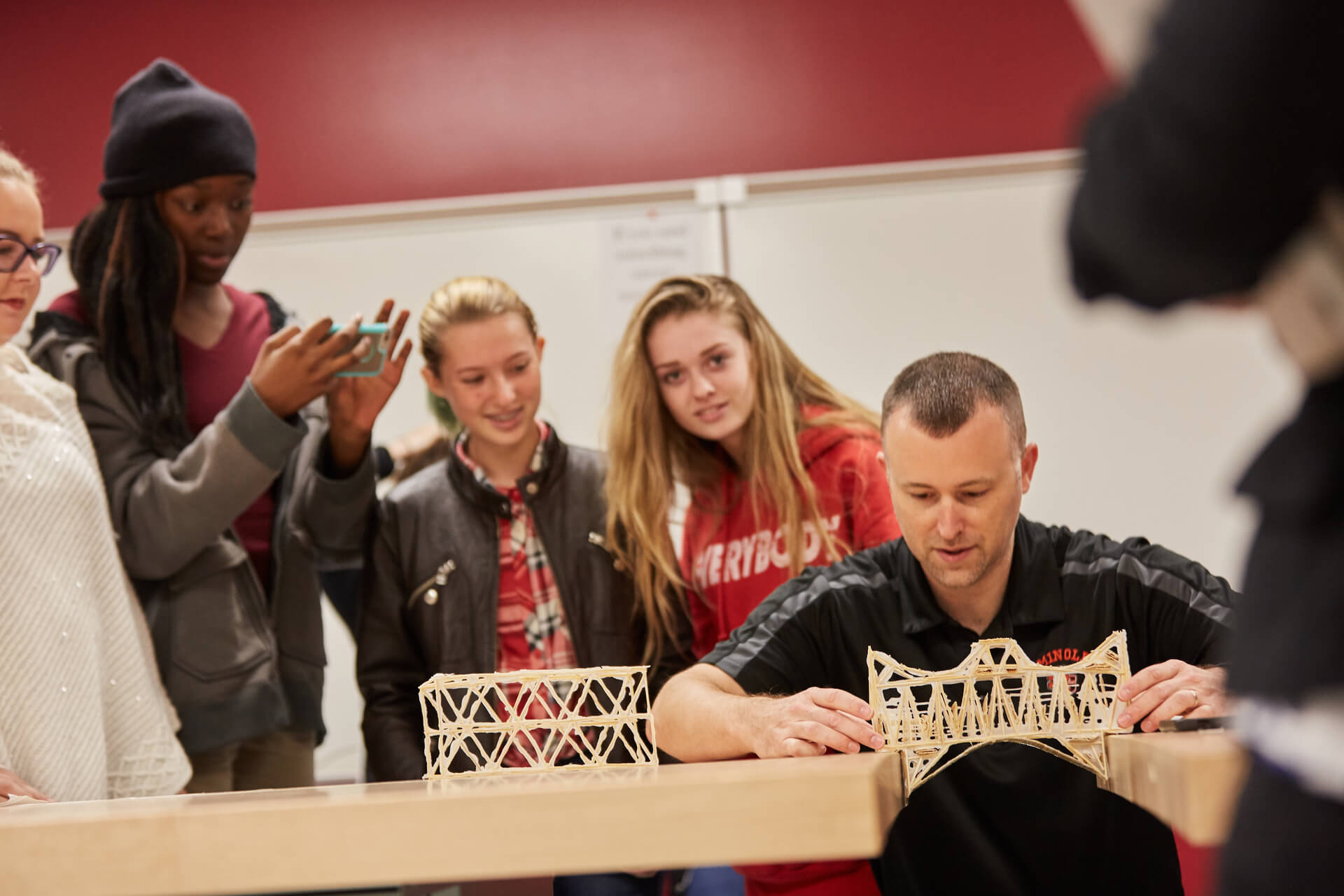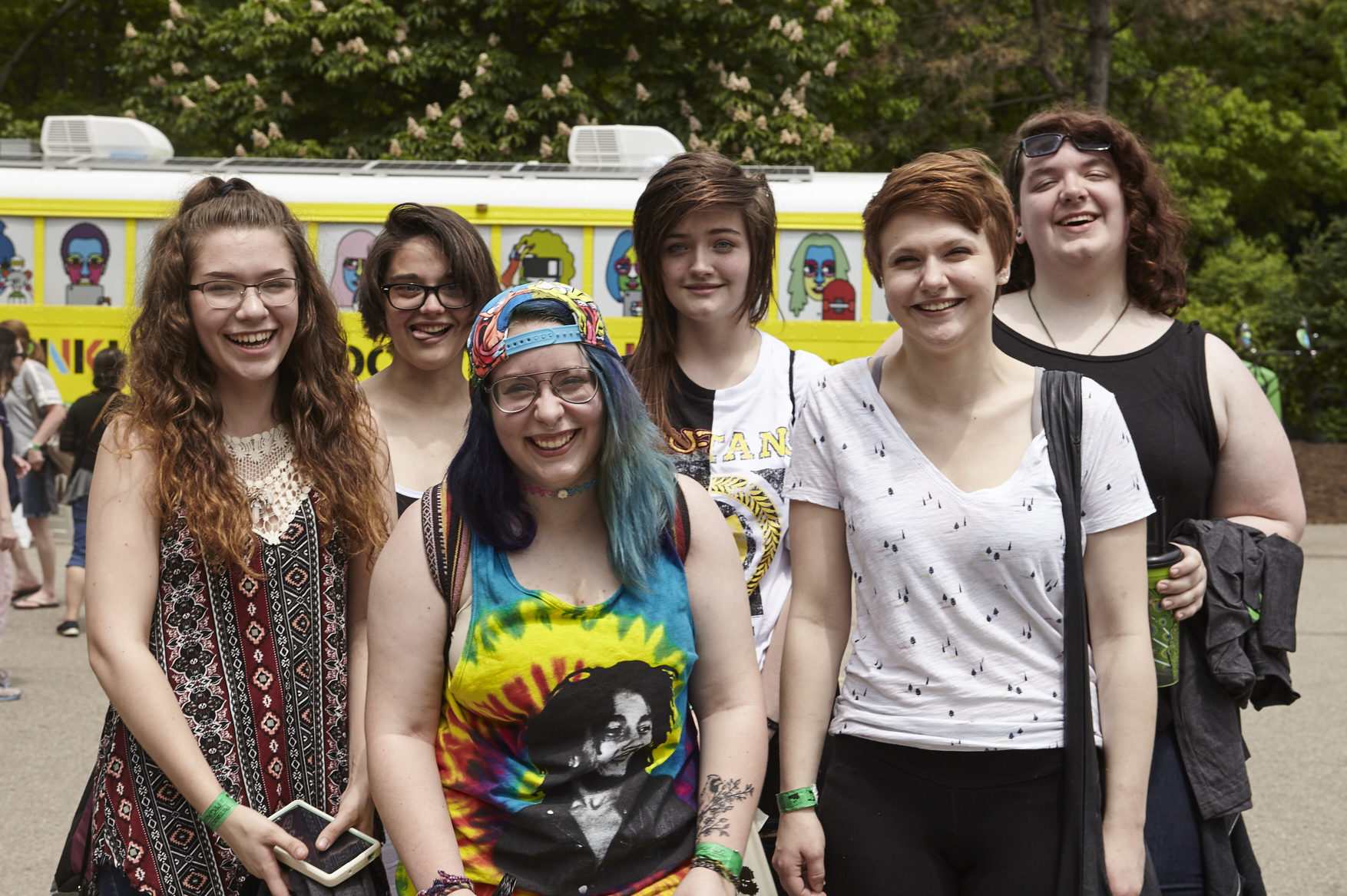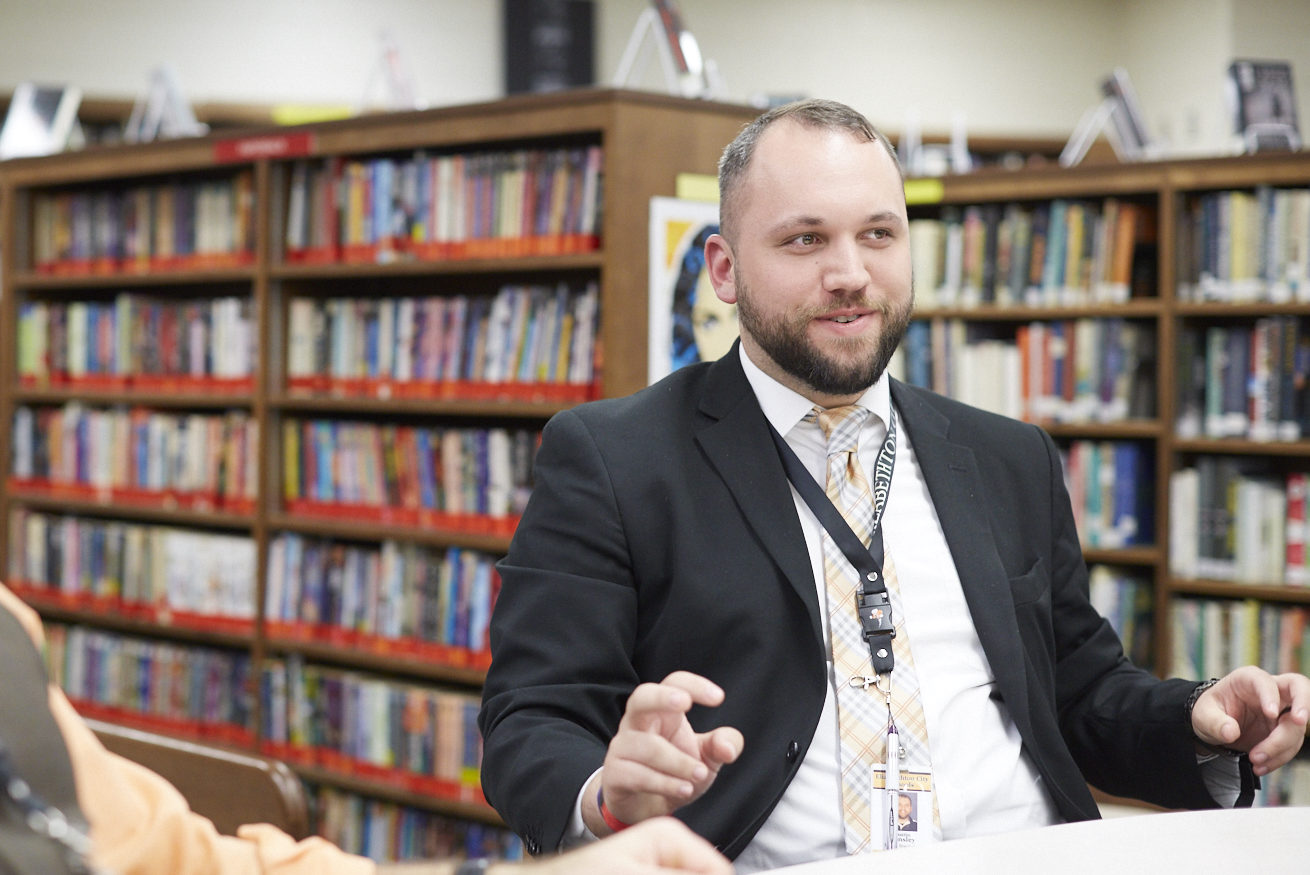Representation Matters: Supporting Black Teachers to Support Student Success
Edward Montalvo, Senior Education Writer I love talking about project-based learning, and at XQ, we…
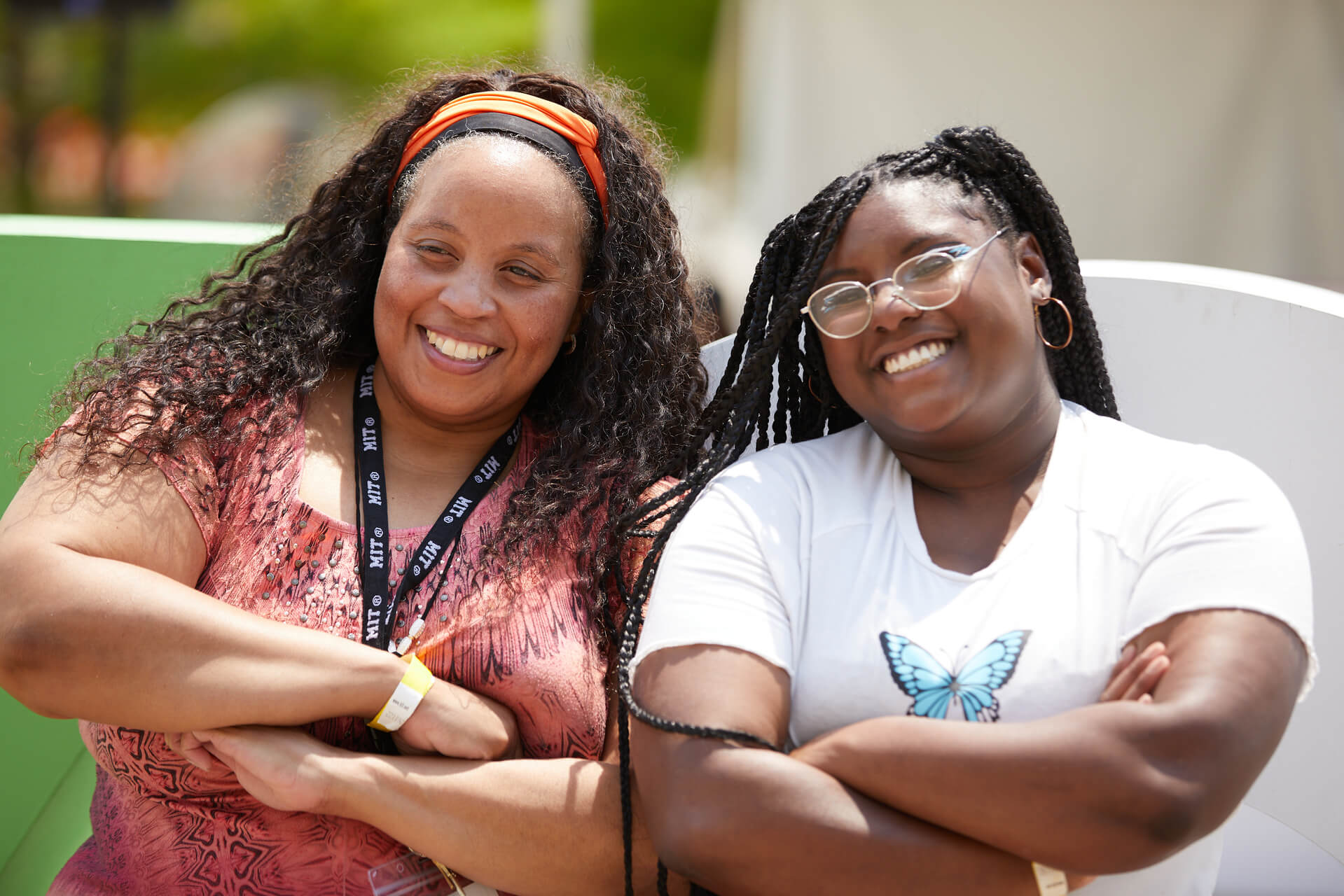

Edward Montalvo, Senior Education Writer
I love talking about project-based learning, and at XQ, we know PBL is one of the most valuable learning models for students. Recently, I had the opportunity to connect with Nikki Wallace of Crosstown High, an XQ School in Memphis, Tennessee. Wallace is the science chair and AP Biology teacher and has been teaching project-based learning for years now. She shared with me the successes and struggles of PBL, the breakthroughs she’s made with students, and how field trips (as stressful as they are) make everything better. Wallace’s experience also shows how high schools designed like Crosstown, that use project-based learning, can help to elevate Black teachers in the profession.
But Wallace also easily acknowledged that her first PBL class at Crosstown wasn’t a rousing success. “I had to learn that you’ve got to make the real connection of why I should be invested in this project,” she said. “Because otherwise, it dies.” Wallace joined Crosstown when it opened in 2018, and during that first year, she and her students faced obstacles with a project about traveling to and living on Mars. The students were concerned about problems back on Earth and pushed back against solving the hypothetical issues on another planet.
After listening to their voices and experimenting with a health project, Wallace pivoted to a different project that examined pollution in a local water system. That led to future projects and experiments tied to the students’ community of Memphis. “I think [the students] felt like what they were working on was something beneficial to someone, or to themselves, or to our Memphis community. So they were more dialed in and more excited about it,” shared Wallace.
Crosstown is a school that is diverse-by-design, which means its staff and students reflect the diversity of their community. The school of about 500 students centers on community partnerships and meaningful, engaged learning experiences—two of XQ’s Design Principles that help the school achieve its mission. Crosstown’s first cohort graduated in 2022, and 95 percent of the students graduated on time; 84 percent said they planned to attend college. By engaging in partnerships with local institutions, students made deeper connections to their community and were able to see pathways to success after graduation.

Nikki Wallace: Researcher, Educator, Advocate
A former science researcher, Wallace has taught for over 13 years in Memphis public high schools. She has always tried to incorporate PBL into her classrooms. Crosstown’s concept meant more resources, autonomy, and opportunities to bring to life the STEM projects she is passionate about sharing with students but wasn’t always able to fully achieve in other schools.
Wallace’s experience and expertise have made her an effective science educator, but her drive and passion for elevating Black voices in the STEM sector have also made her Crosstown’s diversity, equity, and inclusion advisor. She knows first-hand what schools and their leaders can do to help attract and retain Black teachers like herself.
Wallace concurs with others who believe that a meaningful increase in teacher compensation would drastically improve the landscape, but she agrees this is simply a start. To retain educators, especially Black teachers, schools need to ensure teacher autonomy to design and create the learning experiences they know will engage their students and make meaningful connections to their community. This means viewing our teachers as the experts they are. In Wallace’s case, that meant teaming up with three researchers from the University of Tennessee’s Health Science Center for a cancer learning project.
Wallace had just finished her first year at Crosstown in 2019 when she partnered with professor Dr. Michelle Martin at the College of Medicine, and Dr. Idia Thurston, a psychologist at Le Bonheur Children’s Hosptial in Memphis to develop the project’s curriculum for high school students. They were looking for a science teacher, and she answered the call. Wallace also teamed up with a resident oncologist from the university, Dr. David Schwartz, who gave a TED talk about the partnership between STEM education and local institutions. Wallace said connecting with these researchers helped her come up with better ways to manage the projects in her classroom.
“Let me tell you the freedom of the partnerships that I could form and not having a barrier there,” Wallace said, describing how autonomy and access to resources helped her feel both empowered as an educator and more confident in her skills. As a former researcher at St. Jude’s Children’s Research Hospital and Georgia Tech, Wallace wasn’t sure if she was asking too much of her high school students when they complained about her Mars project. Partnering with outside researchers provided a new sense of community and liberation from those concerns. “When you’re connected to somebody outside of education, it keeps you fresh, it keeps you engaged,” she said.
Wallace uses her background in molecular biology to create projects that are engaging to her students and that she also hopes will connect them to a field of study she’s still passionate about. Recently, she was able to partner with more professors from the University of Tennessee. Witnessing Dr. Janeane Anderson and Dr. Crystal Walker share how their research in HIV prevention addressed real problems students might see in their community was a transformative experience, she said.
“It was really an engaging moment,” she explained. “Two Black women, who are doctors, talking to my students here about their work and how important it is [for Memphis]—was just moving. Moving to me and the students.”
Wallace has invited numerous scientists, doctors, and engineers from local institutions to support students throughout the various projects. By doing this, students see pathways for generational wealth and security.
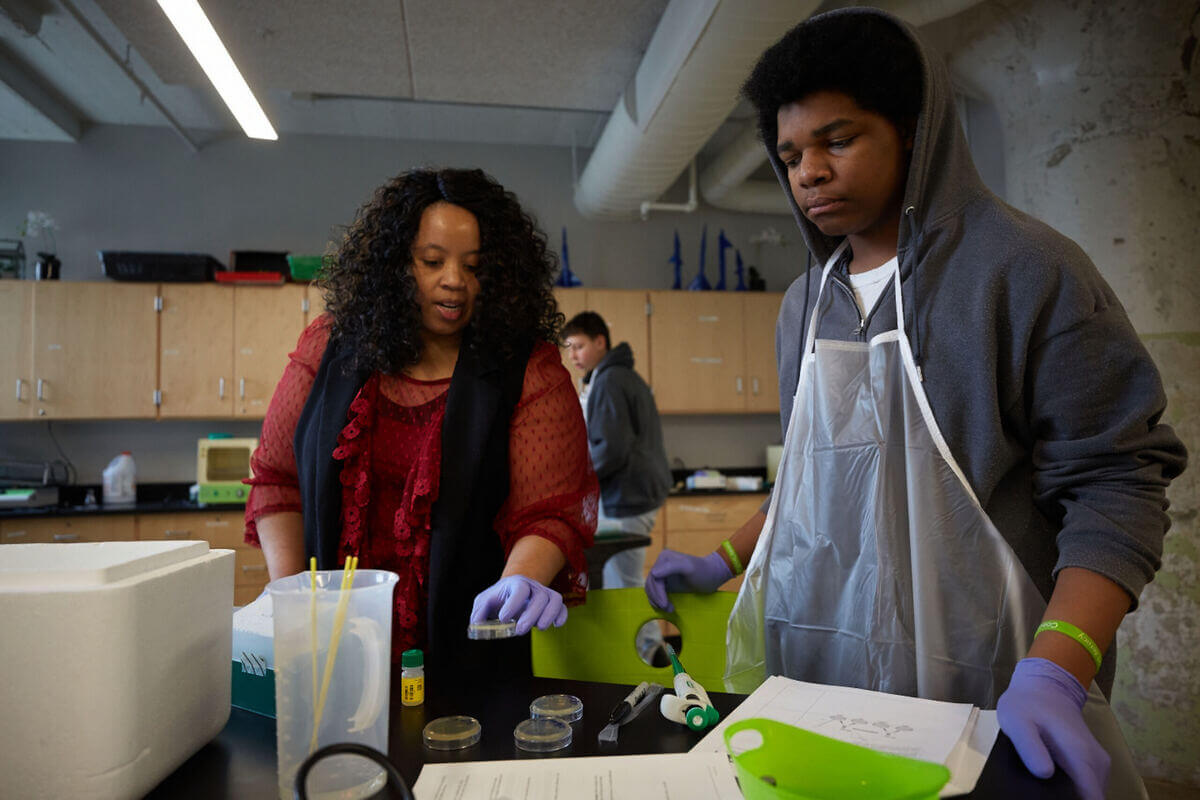
Empowering Black Educators Through Community Partnerships
By leveraging community partnerships continuously, Wallace also supports new teachers. The first year of teaching is always the hardest, and learning how to successfully bring PBL into the classroom can be equally challenging. However, providing new teachers with the resources and opportunities to experience and observe learning beyond the classroom can improve their confidence and buy-in. “If you give them one way to improve their community, they’re going to stay,” Wallace shared.
That’s true for teachers and students alike: if you give teachers an opportunity to improve their schools, they’ll stay; if you give students an opportunity to improve their community, you’ll provide the purpose necessary for meaningful, engaged learning.
At a time when Black educators represent just under eight percent of all U.S. teachers, there’s a lot of talk about the importance of creating a more diverse workforce. Research has consistently shown that having Black teachers can lead to better educational outcomes for Black students, who make up 15 percent of learners. Numerous studies have also found that students are more likely to graduate from high school and go on to college when they have at least one teacher that represents them. This is especially true for young Black male students who are at a higher risk of experiencing egregious systemic issues.
But as Wallace pointed out, Black educators—like all educators—are looking for opportunities to sustain and support themselves and their families with work they are good at, well-prepared for, and passionate about. “We’re looking for opportunity,” she explained.
Additional Resources:
Below is a list of resources to help you learn more about how to intentionally integrate community partnerships to empower educators in the classroom:
XQ Design Principle: Community Partnerships
How Schools Can Engage Community Partners
This High School Uses Community Partnerships to Bring History to Life
5 Ways to Engage Community Partners
5 Community Partnerships in Action
Photo at Top by Chris Chandler.
